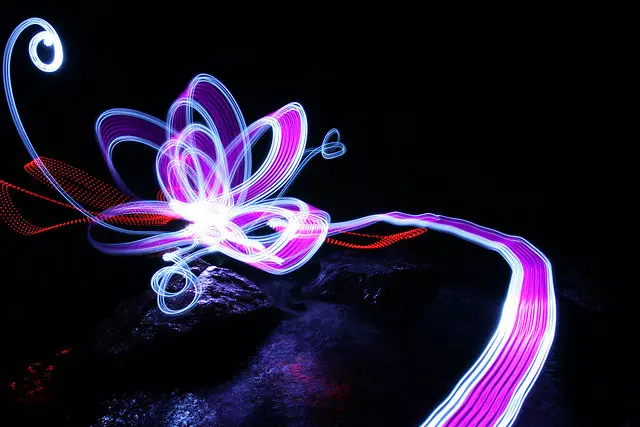You may have already seen Light Writing in action, but for those who haven’t, a quick explanation- The technique is almost 100 years ago, when Picasso (that man just loves to contribute to the art world..) decided to sketch a centaur mid-air using a torch –
The photograph was taken by Gjon Mili – “I confronted him [Picasso] with a photograph, taken in darkness but showing a skater’s leap traced with lights attached to the skates. Picasso reacted instantly. Intrigued, he began drawing with his finger in the thin air.” They arranged to meet at a pottery in Vallauris. In the dark, after Mili fired his flash, Picasso sketched a centaur in the air –
Since then Light Writing has come a long way, and under the microscope is the group LICHTFAKTOR-
Lichtfaktor, a group of artists from Cologne, Germany, are setting the bar high for other light artists all over the world. The group have made the plain and simple (a trash can for example) into fluid, moving, illuminative works of art, attracting the attention of major companies wanting to commission the group for their own means – the likes of Philips, Current TV and Sprint amongst them.
The Group first kicked off in 2006. Marcel Panne ($ehvermögen) , David Lüpschen (Jiar) and
Tim Fehske (10X) first worked together when Panne was asked to invent some new material for an event with the theme ‘Energy in Motion’. Fehske has since left the group, but $ehvermögen (photographer and VJ since 1997 with many years of experience in the event field) and JIAR (communications designer and graffiti artist) are still experimenting with light on the streets.
The entire streetscape is the artist’s ‘canvas,’ not merely acting as a backdrop, but is incorporated into the work itself – Lichtfaktor are also kind enough to offer a tutorial, here it is
HOW TO DO IT.
“This are the basics: to get the best results you need a tripod. the exposure should be around 10-30 sec. or longer if needed. stay in front of the camera and do your writing. to not overexpose set the camera to about iso100, and close your aperture as much as possible. if there is still too much light, you might have to use a nd-filter. it is always nice to integrate the surrounding into your picture.
We use flashlights, biking-lights and flashing LED lights, they all work with batteries, so that we are mobile, you also get nice results with fireworks & torches.
There are 3 different type of lights we use:
Xenon: makes a warm golden light.
LED: makes a thin precise line.
Cold Cathode: thick line/fat cap.
But the best results you get by experimenting, use filters and things which reflect light…”







